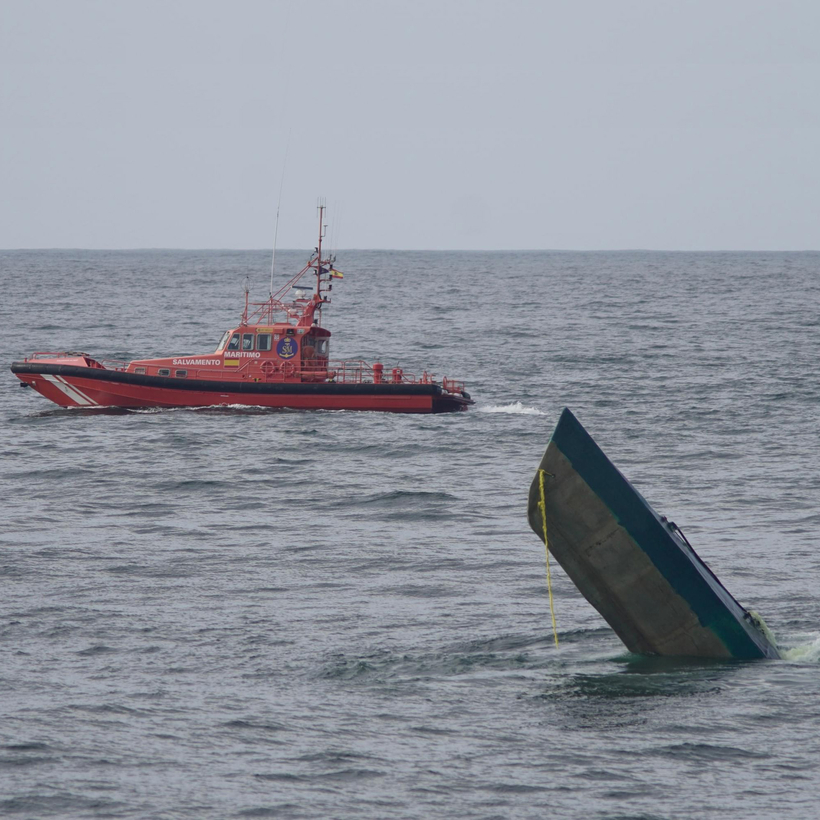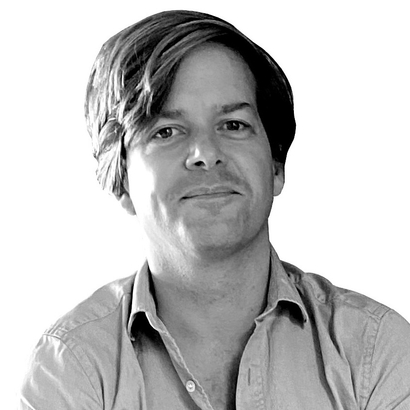Almost four years ago, Sjoerd Top, a trim fiftysomething, came to Lisbon to run Europe’s nerve center for drug interdiction, the Maritime Analysis and Operations Centre (Narcotics), or MAOC (N). Back in the Netherlands, he was with the Dutch National Police Corps. With good intelligence he could find a car carrying drugs in 5 minutes, maybe 15. Out here on the Atlantic? “Three weeks,” he says, “even with satellites,” which are no help in bad weather.
Top looks out on the Tagus River, choppy and windy today, whitecaps blowing on the water like bumps on snakeskin.
“On a day like this,” he says, “it’s impossible.”
Lately the cartels have adjusted to law enforcement with dazzling success. They’re building submarines under cover of mangroves, deep in the Amazon, then sending them across the Atlantic with tons of cocaine, running on diesel, piloted by all-but-indentured crews living on canned food and raw fear.

We were far from canned food, in the café at Lisbon’s Museum of Art, Architecture and Technology. This is not the best restaurant in Lisbon—that is an article for another time—but it is the best lunch in Lisbon, certainly during rainy season.
The café is nestled in one of the city’s great modern architectural treasures, on a tender shore of the Tagus River as it flows into the ocean—a reliable source of wild surprises. Centuries ago, it was Viking raiders. More recently, three tons of pure cocaine were successfully dropped just up the shore, on Galicia’s Costa da Morte. When Spanish authorities reached the beach, they found only hundreds of human footprints and tractor treads, the marks of Galician fishermen who, 40 years after helping Pablo Escobar make his first drops here, remain eager to make extra cash with Colombian cartels.
A waitress takes our orders. I have oysters from Portugal’s Ria Formosa—formosa is a Portuguese word reserved almost exclusively for female beauty, but occasionally given to nature—and the oxtail risotto. Top and his analyst order the tuna carpaccio to start, and then codfish, or bacalhau, a Portuguese staple whose name is of Dutch and Galician origin, itself a testament to how cargoes shape even language.
“If you look at the Galicians, far before cocaine, these groups were already dealing with tobacco,” Top says. “Some of the current organized-crime groups that deal with methamphetamine or cocaine, 100 years ago, their families were smuggling butter because there was a big difference in the price in the Netherlands and Belgium.”

We laugh at the idea of Dutch butter gangs having butter-knife fights, skulking in butter boats. But days later, The Wall Street Journal covers egg smugglers working the U.S.-Mexico border.
The appetizers arrive. The carpaccio looks like a Hockney sunset. The oysters are clean and briny from the recent weeks of rain—no need for even lemon. The wind whips outside.
“Look at the Italian Mafia,” says Top. “They still use the family bonds from people that are a third generation in Mexico, in Brazil. People see them as Brazilian or Mexican people, but they are formerly from Italy. So they went to the United States, they went to Mexico, they went to Brazil, probably 100 years ago, and they still use those bonds. If you look at the cocaine routes right now, we know there is a huge Lebanese diaspora in Brazil, in West Africa, and a huge amount of Lebanese people living in the Middle East. So if you want to bring those parts of the world together, you make use of those bonds. They’ve been doing this with illicit goods for ages. It can be humans, it can be cocaine, it can be … ”
Eggs. Or butter. Or …
“Organ trafficking. People want to make money. And you can make money with smuggling cocaine because you can probably buy it for 2,000 euros in Colombia and sell it for 10 times the price here in Europe.”
“The individual who’s in the ship,” I say, “is a victim of subhuman conditions. I mean, no one should spend a month crossing the Atlantic in a semi-submersible.”
Top’s analyst, who arranged this lunch but can’t be named for security reasons, says, “We’ve seen pictures. Many pictures. I still can’t get my head around it. Forget the danger of the seas and everything. Just inside, inside the submersible. The air that you breathe … ”
The Ghost Ship
Our food arrives. The oxtail stew melts into the ivory risotto. The cod is perfectly done. The waitress offers another glass of wine. I accept and turn the discussion to the recent action in Iberia: four successful drops, approximately three tons landed in the last one, just weeks ago.
“It’s a lot,” says Top. “We knew organized-crime groups were using semi-submersibles, but we thought it was impossible for them to cross the Atlantic because a human being can’t make that voyage. You’re not gonna take that risk on the ocean. If you go in the Caribbean, of course the weather can be bad, but you can prepare for, let’s say, a week-long trip. You can see the weather forecast for this week. You can’t do that on the Atlantic.”
And then came the ghost ship.
MAOC (N) received high-confidence intelligence of a drug shipment, along with precise coordinates. First the Portuguese flew and sailed out to intercept—nothing.
Then the Spanish and Americans—nothing.
“So there were three different countries working on this specific vessel, and everybody said there is no vessel. And what we heard, because the people were arrested in Galicia later on, was that they saw the navies on the right track. But nobody was expecting to look for a semi-submersible. They were all checking above the water, but not so low in the water because it was impossible in our imagination to cross the Atlantic.”
I ask if they have some respect for the other team.
“Sometimes I can think, ‘O.K., that was clever,’ but never respect,” says Top. “We also got information from some of our countries that livestock vessels are being used to transit drugs. Can you imagine? It’s horrible, but there are companies that transit six to ten thousand cows on one vessel, and it will take three or four weeks to bring them mainly from Latin American countries towards the Middle East. During that trip hundreds of them die. It’s very hot inside. The animal welfare is really horrible.”

One such ship was called the Orion V, named for the great slaughterer of animals that Odysseus met in the underworld. It sailed under a Togolese flag.
“So we got intelligence that the vessel was loaded, and the Spanish authorities were so brave to intercept it, and brought it to the Canary Islands. Have you ever been to the Canary Islands? Beautiful islands, very touristic. Then the Spanish bring in a vessel which is normally not allowed to enter any port in Europe, but because of the mayor saying, ‘This vessel is loaded with cocaine,’ they brought it to port. And then there are 6,000 cows on that vessel producing 10 tons of cow shit, every day, going into the water.”
“Ten tons a day?”
“Probably more. It just goes into the water like it normally does on the ocean. Except it’s not the ocean. So the beaches in the Canary Islands had a different color, and people near the port started complaining about the horrible smell. So the Spanish authorities, they searched the vessel, and eventually they found, I think, 4.5 tons of cocaine. Four-point-five tons: that’s a huge amount of drugs, even for Spanish—”
“Holiday-makers?”
“Authorities.”

The cocaine was hidden in the animals’ feed, meaning the entire crew was involved. Top says they should all have been arrested.
“Then the police said, ‘But if we arrest 24 crew members, who’s taking care of the cows?’ On one hand, you want to prosecute people. On the other hand, you don’t want your nice nature in the Canary Islands destroyed by 6,000 cows producing 10,000 kilos of poop every day.”
I ask what happened to the cows.
“Eventually they only arrested a couple of them.”
“The cows?”
“No, no, no. The crew members. This is also to explain that organized-crime groups will always try to find different ways. It can be semi-submersibles. It can be fishing vessels. If it’s not going through the ports, they probably use a go-fast boat to land on the beach. In five minutes, it’s off-loaded and in a truck, and the people laying on the beach were there on their blankets, but nobody saw or heard a thing.”
It is a truth universally recognized, by lunch’s end, that when forced to choose between tanning and helping Spanish law enforcement, most Galicians will choose tanning and then go dancing with their friends who hauled the drugs ashore.
“So yeah,” says Top, “that’s a difficulty we’re facing.”
Dana Vachon is the author of the novels Memoirs and Misinformation (with Jim Carrey) and Mergers & Acquisitions. He lives in Lisbon


